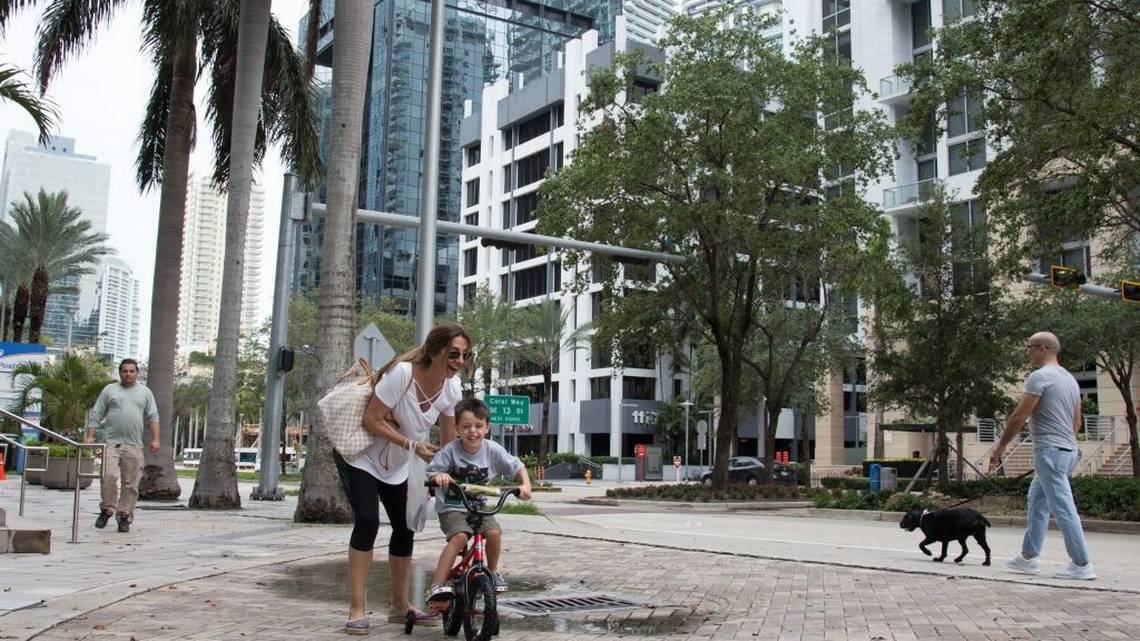On a recent weekday, a couple walked into our sales center armed with an iPad full of floor plans, a mortgage application and information on comps, ready to make a commitment. These buyers weren’t just visiting from Brazil or China for a few days, instead they had spent the last two decades raising a family in Coral Gables. Now, with kids in college and the big house mainly empty, they were excited about moving to ‘the city’ — Brickell, that is.
In the 1990s, you could count the number of local buyers who walked in off the street to buy a condo at Santa Maria or Bristol Tower on one hand. Today, it’s the new normal.
To further illustrate just how far the pendulum has swung: This time a year ago, 70 percent of Brickell Flatiron’s condos were selling to Latin American buyers. But now, 80 percent of sales are going to local and domestic buyers.
With easy access to world-class restaurants, high-concept shops at Brickell City Centre, sprawling Bayfront Park and the greatest concentration of cultural institutions in the Southeast, the secret’s out on Downtown Miami.
Imagine going down the elevator, heading out the door — on foot — dropping your child off at daycare and then hoofing it a few blocks to work, all within 15 minutes. This is how it feels to live in Manhattan, in London, and now, in Downtown.
The number of residents living between Brickell and Edgewater has soared nearly 40 percent over the last eight years. Downtown is now home to 92,000 residents– projected to grow to over 109,000 by 2021 — with children representing one of the fastest growing segments of the population, according to a new report issued by the Miami Downtown Development Authority (DDA).
Developers have taken note. From high-end playrooms to pet spas, Downtown’s newest luxury buildings are going above and beyond to cater to these new demographics.
New construction reflects the changes happening in the neighborhood in other ways as well. Discounts for residents that don’t own cars are commonplace, and frankly, you don’t need one when luxury dining, specialty markets, and entertainment venues are right next door.
This year alone, close to 2,800 condominium units will be delivered to feed growing demand, especially at the luxury and ultra-luxury price points. Over the past five years, Downtown’s real estate market has also become more highly differentiated when it comes to product. For instance, thousands of conventional Class A rental units have been delivered or are in the pipeline mainly responding to an influx of young professionals and millennials that still make up the bulk of the population.
In line with the “Manhattanization” of our urban core, several exciting projects are poised to have a massive positive economic impact on Downtown, such as The Underline — our answer to New York City’s High Line — Brightline, the new high-speed train that whisks passengers back and forth between MiamiCentral station, Fort Lauderdale and West Palm Beach; and Miami DDA’s Baywalk-Riverwalk.
As if all this weren’t enough, changes to the tax code that kicked in this year have made Miami even more attractive to homeowners in expensive states like New York, Washington D.C., California and Connecticut. These buyers are flocking to areas like Brickell because it feels like what they have back home: a walkable, connected urban center where everything you need is at your fingertips.
The number of people choosing to live Downtown, whether they’re relocating from the ‘burbs or moving to Miami for the first time, is a trend that’s here to stay.
▪ This column, written for the Broker’s View space in Business Monday in the Miami Herald, is an opinion piece representing the view of the writer. It does not necessarily represent the newspaper’s view.
▪ Got a Broker’s View? Realtors may submit columns for Broker’s View of 700 words to to [email protected]. This feature is intended primarily for residential brokers, who will be given preference, but pieces about commercial real estate will also be accepted as space allows.
